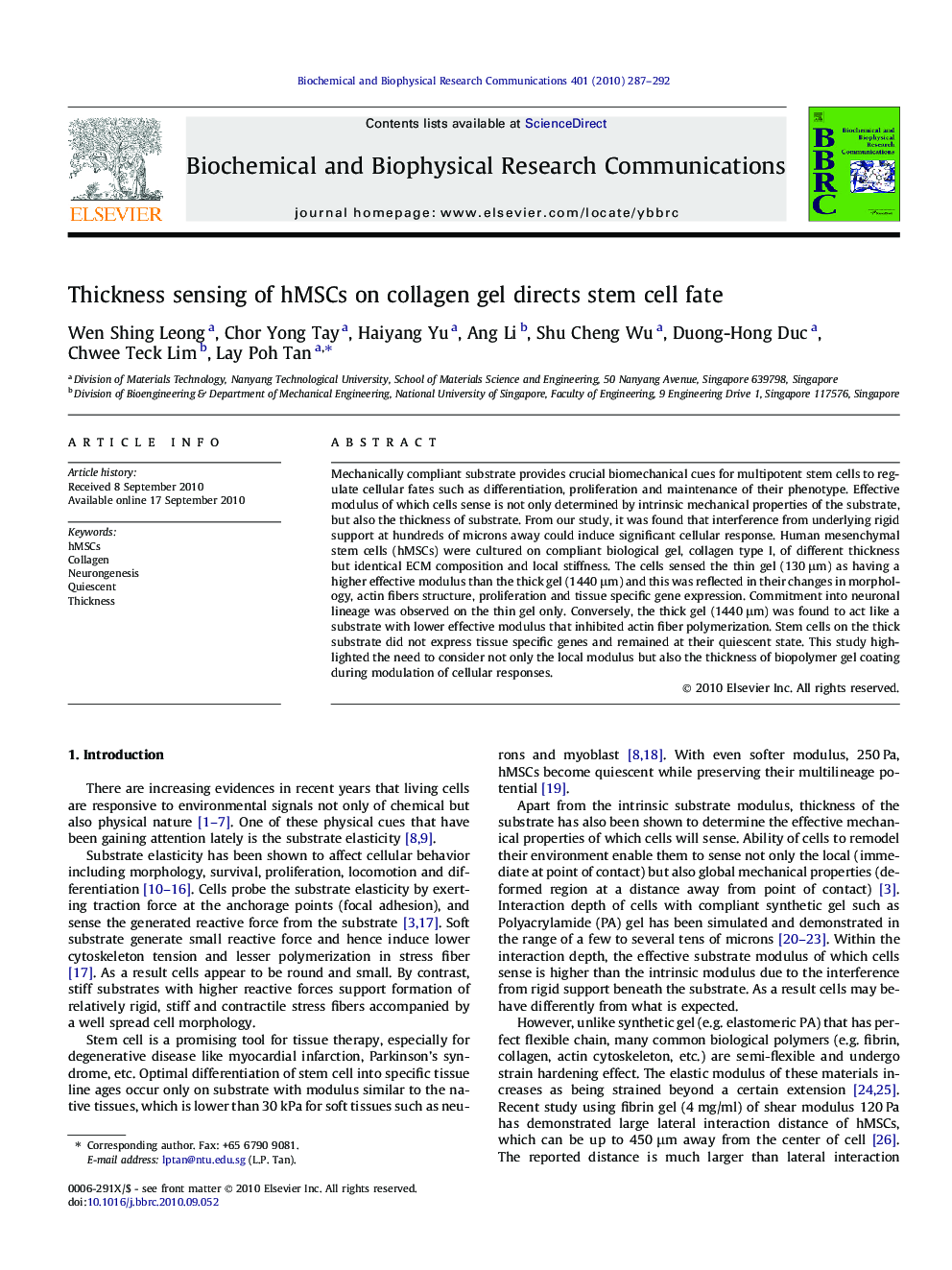| Article ID | Journal | Published Year | Pages | File Type |
|---|---|---|---|---|
| 1931064 | Biochemical and Biophysical Research Communications | 2010 | 6 Pages |
Mechanically compliant substrate provides crucial biomechanical cues for multipotent stem cells to regulate cellular fates such as differentiation, proliferation and maintenance of their phenotype. Effective modulus of which cells sense is not only determined by intrinsic mechanical properties of the substrate, but also the thickness of substrate. From our study, it was found that interference from underlying rigid support at hundreds of microns away could induce significant cellular response. Human mesenchymal stem cells (hMSCs) were cultured on compliant biological gel, collagen type I, of different thickness but identical ECM composition and local stiffness. The cells sensed the thin gel (130 μm) as having a higher effective modulus than the thick gel (1440 μm) and this was reflected in their changes in morphology, actin fibers structure, proliferation and tissue specific gene expression. Commitment into neuronal lineage was observed on the thin gel only. Conversely, the thick gel (1440 μm) was found to act like a substrate with lower effective modulus that inhibited actin fiber polymerization. Stem cells on the thick substrate did not express tissue specific genes and remained at their quiescent state. This study highlighted the need to consider not only the local modulus but also the thickness of biopolymer gel coating during modulation of cellular responses.
Research highlights► hMSCs appeared to sense thin collagen gel (130 μm) with higher effective modulus as compared to thick gel (1440 μm). ► Control of collagen gel thickness can modulate cellular behavior, even stem cell fate (neuronal vs. Quiescent). ► Distinct cellular behavior of hMSCs on thin and thick collagen gel suggests long range interaction of hMSCs with collagen gel.
